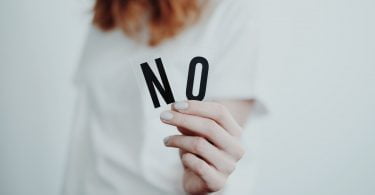Trigger warning: eating disorders.
Can you see your waist if you hold up a piece of A4 paper vertically in front of it? If the answer is positive, you have failed the now famous ‘fitness’ challenge created in China. Pictures of women holding this piece of paper went viral on the web, especially on Instagram and Twitter. They proudly show their ‘A4 waist’ and promote it as the new standard of beauty.
Chinese women are reputed to be smaller than any other women in the world, and their tiny waists have been a long tradition in China – at least since King Ling of Chu in 540 B.C. Many are familiar with a passage from the Book of Han: ‘The King of Chu loved a narrow waist. Many people at court starved to death’. However, this new challenge goes way too far. Here are four reasons why this challenge needs to go away as soon as possible.
1) Being paper thin is unrealistic
An A4 piece of paper is 21cm wide, which is approximatively 8.3 inches. TechInsider did the math for you: the perfect candidate for the A4 paper challenge needs to have a 25 inch waist – or smaller. The average woman in America has a 35 inch waist, as the New York Times points out. Even size 0 doesn’t make the cut!
2) Being paper thin is dangerous
The hashtags have allowed an incredible amount of users to see these pictures. The problem is that 55% of Instagram users are between 18 and 29 years old, thus a population which can be easily influenced. The dark side of social media strikes again, allowing teenagers to think that having an A4 waist will make them beautiful. Promoting such unreachable goals might contribute to poor mental wellbeing, and even eating disorders.
It has already been the case with the ‘thigh gap’ challenge a few years ago, which required women to increase the gap between their thighs to be ‘sexy’. Young women starved themselves, measured their thigh gap every day and posted their ‘progress’ pictures on social media to find approval. Being skinny, dieting and an eating disorders are extremely different, the latter having dangerous consequences. Deficiency in calcium, teeth problems, acne, dizziness, loss of hair and period problems can be just some of the consequences of eating disorders.
3) An A4 waist is not #goals
The women posing in these pictures might seem harmless, however in reality they are bodyshamers. They make you feel bad because, as soon as you look at them, you take a look down at your waist and think that you are not fit enough. This challenge is dangerous, not only for physical health but also for mental health. Women need to stop with those absurd challenges, which are constantly appearing online. In 2013, two other challenges promoting skinny and bony bodytypes emerged. The first one was the Belly Button challenge, which consisted of touching your belly button by reaching behind your back and around your waist. A week later, the trend was to fit as many coins as possible on your collarbone: the skinnier the collar bone, the more coins you could fit.
4) A paper thin waist is not fitness
They call it a fitness challenge, however it should be renamed the ‘how-well-can-you-survive-without-eating’ challenge. The women on these pictures are proud of their body and there is nothing wrong with that, however, they think that these challenges are a ‘fitness’ success. The only way to have a paper thin waist is to starve yourself, and they cannot link fitness with such an unhealthy beauty standard. Fitness makes you strong, toned, confident, and most importantly is good for you. Having an 8.27 inch waist is not a measure of fitness.
Social media responds
Nevertheless, this challenge has not been widely accepted on social media, often depicted as absurd and destructive. Instagrammers and Twittos have taken the lead and posted their own pictures mocking the challenge: holding up their degree in front of their waist, a giant piece of paper or simply involving their pets. Reactions from doctors and nutritionists in alarming readers have also played a crucial role. Women posted pictures of their belly on the net, regardless of their size, with an inspiring message for everyone: #notpaperthin
The question remaining, is what can be done about it? Bodyshamers on social media are extremely powerful, often attacking celebrities and creating challenges to fit their own beauty standards. Their creativity is off limits and accessible, thus making it possible for young users to be badly affected. They are also unpredictable: one week they’ll be promoting bony collarbones, the second they are amazed by ‘thighbrows’, which require women to have curves.
The only solution is to let social media destroy what it created. As seen above, users can form a helpful community and counter-attack. Inspiring messages are much more important than volatile trends, which actually make these women look more misguided than sexy.
What are your thoughts on bodyshaming social media challenges? Let us know in the comments below or on Twitter @KettleMag!








